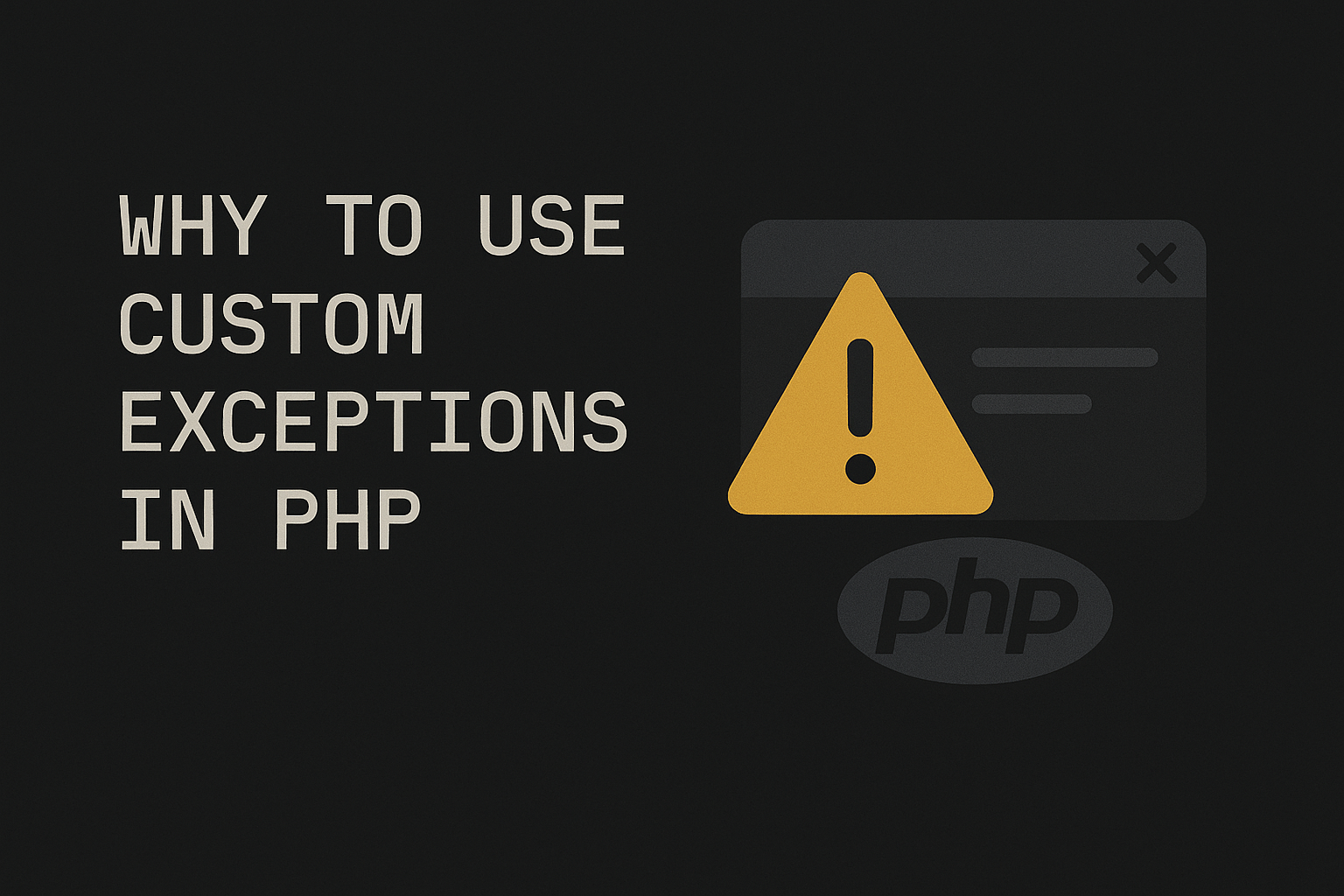Introduction
When creating applications with PHP, Exceptions play a vital role in handling errors and irregularities that arise during the application lifecycle. They are anomalous situations or conditions that can occur in the code because of different situations like wrong input data or even an unexpected network issue.
An Exception is a standard way of signalling that an unexpected or exceptional condition has occurred that the current code cannot handle. The power of Exceptions lies in the ability to manage the flow of the application when these unexpected conditions occur. In this article we will talk about how to use Exceptions in PHP to create more robust and error-resilient applications.
Advantages of Using Exceptions
First of all, why should we use Exceptions? Because they can improve the overall quality of our applications when used in the right way. Some of the advantages of correctly using Exceptions are:
Improved Error Handling
Exceptions provide a structured way to catch and handle errors during the execution of an application. They let us separate the error handling code from the main logic of our application, leading to cleaner and more maintainable code.
Controlled Logic Flow
When an exception is thrown, the normal flow of the application is interrupted, allowing developers to direct the application flow to the appropriate logic. This makes it easier to manage and predict the applications' behaviour in the event of errors.
Rich Error Information
We can use exceptions to provide valuable information about the errors, when we know that something wrong can happen we can create custom exceptions that offer us a better visibility on what's going on. Also, for debugging purposes, exceptions provide us with information like the file and line number where the error occurred and also the trace of the error. This can be extremely useful for debugging and logging purposes.
Exception Chaining
PHP supports exception chaining, allowing developers to throw a new exception while preserving the previous one's information. This can be useful in situations where different types of errors need to be handled in different ways. To chain an exception in PHP, we can pass the previous exception as the third parameter when throwing a new exception:
throw new MyCustomException(message: "Something went wrong", code: 500 , previous: $previousException);
Flexibility and Extensibility
PHP's exception-handling system is flexible and extensible. Developers can define their own exception classes to handle specific types of errors, providing a high degree of customization and control over error handling.
Generic Exceptions
In PHP, a generic exception is represented by the base Exception class. It is a built-in class that can be used to handle or represent any kind of error condition in our application. This class provides the basic foundation for exception handling in PHP and can be used directly or extended to create custom exception types.
Here's a basic example of how to use a generic exception:
try {
// Code that may throw an exception
$result = 5 / 0; // This will cause a division by zero error
} catch (Exception $exception) {
// Handle the exception
}
In the example above, we have a try block that contains code which might throw an exception (in this case, a division by zero). If an exception occurs anywhere within the try block, the execution will immediately shift to the catch block where the exception is handled.
It's important to note that the catch block will only handle exceptions of the type specified in its parameter list (or any of its children). In this case, it's catching instances of the Exception class, which is the base class for all exceptions in PHP, so any errors that occur inside the try block will fall into that catch block.
Custom Exceptions
Custom Exceptions in PHP allow developers to define their own exception types. These can be used to handle specific error conditions in a more structured and meaningful way. Custom exceptions are created by extending the base Exception class and they can include additional properties and methods to facilitate more detailed error reporting.
Why to use Custom Exceptions?
Custom Exceptions allow us to define specific types of exceptions that reflect the possible error conditions in our application. We can include additional information about the error, such as the context in which it occurred or the specific data that caused it.
Also, by defining our own exception types, we can handle specific scenarios in a targeted way, leading to a more robust and effective way of handling errors. We can even build or use tools for error logging to see which types of errors are the most common ones happening in our applications.
When talking about APIs, you can use Custom Exceptions to create standardized and structured error responses with a small effort.
How to use Custom Exceptions
Let's take as an example an application that handles taxes and if a user provides an invalid tax number, you need to show a message about it. The current code is the following:
try {
// Custom logic for the application
if (! $this->isValidTaxNumber($taxNumber)) {
throw new Exception('The tax number is incorrect');
}
} catch (Exception $exception) {
$this->buildResponse($exception);
}
In the code above we have a big issue. We would need to manually check if the exception message is the one that we want in the buildResponse method or even worse, if anything else goes wrong in that try block we could risk showing sensitive information about our application if we don't handle the exception properly.
In this case, since we already know that the user can provide an invalid tax number and we can't allow that, we can create a Custom Exception to handle that and tackle the issue mentioned above.
use Exception;
use Symfony\Component\HttpFoundation\Response;
final class InvalidTaxNumberException extends Exception {
public function __construct()
{
parent::__construct('The tax number is incorrect', Response::HTTP_UNPROCESSABLE_ENTITY);
}
}
Then with the new InvalidTaxNumberException class, we can update our logic to use it:
try {
// Custom logic for the application
if (! $this->isValidTaxNumber($taxNumber)) {
throw new InvalidTaxNumberException();
}
} catch (InvalidTaxNumberException $exception) {
$this->buildResponse($exception);
} catch (Exception $exception) {
$this->handleGenericException($exception);
}
You can see that now when a user provides an invalid tax number we raise a specific exception, the one we created before, allowing us to have a more robust and precise error handling than before. You can also see that we can define multiple catch blocks if needed to handle different types of exceptions. In this case, we call the buildResponse method when an InvalidTaxNumberException exception occurs, but if we have any other type of exception, we call the handleGenericException instead, so we can better handle what to return to the user.
Conclusion
In conclusion, using Custom Exceptions in PHP is a powerful strategy for robust and efficient error handling. By defining specific types of exceptions, developers can catch and handle errors in a more targeted and meaningful way, leading to cleaner, more maintainable code.
Custom Exceptions provide additional context and information about errors, making debugging easier and more efficient. They also increase the readability of our code, as they can clearly signal what kind of error occurred. From small applications to large-scale ones, using the power of Custom Exceptions can significantly improve the overall code quality and maintainability.
I hope that you liked this article and if you do, don’t forget to share this article with your friends!!! See ya!


